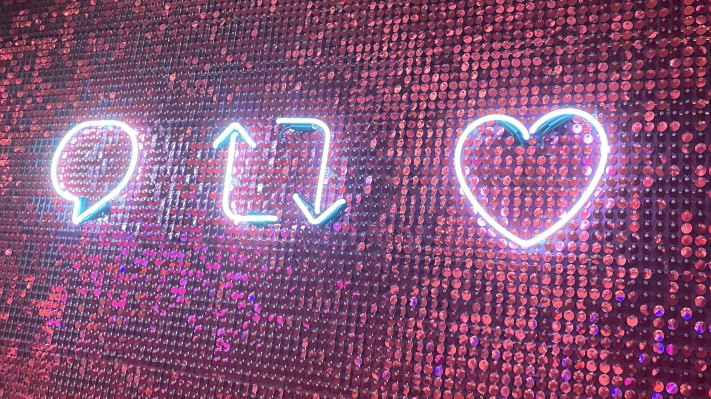If you’re old enough to remember the outrage that followed Twitter’s decision to replace stars with hearts (aka likes instead of favorites), then you know that Twitter’s user base has strong feelings about how it wants to engage with tweets. Now, Twitter is considering another radical change on this front that could shake things up yet again. The company has been surveying users throughout the month to get input on how they feel about a broader set of emoji-style reactions, similar to what you’d see on Facebook.
“We’re exploring additional ways for people to express themselves in conversations happening on Twitter,” a Twitter spokesperson said of the survey.
Specifically, Twitter’s survey proposed a few different sets of reaction emojis, all of which include the heart (like), laughing face with tears (funny), thinking face (interesting) and crying face (sad).
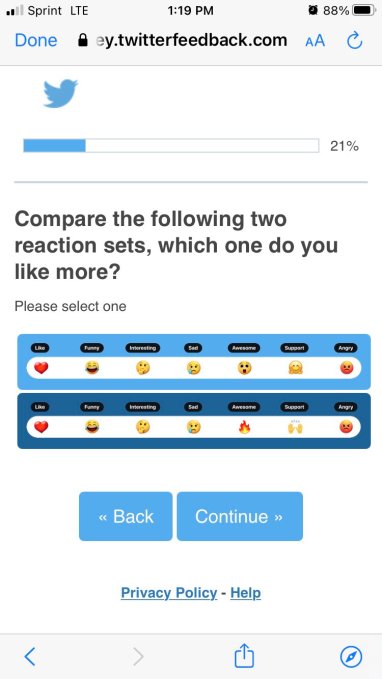
Image Credits: @jdm0079 on Twitter (opens in a new window)
It then proposed some variations on this basic set, where the “awesome” sentiment could be expressed with either the shocked face or fire emoji, or where a “support” sentiment could be indicated with either the hug emoji or the raised hands.
More controversially, Twitter is considering a way for users to signal a general like or dislike for the tweet with either a thumbs up or thumbs down, a “100” in either green or red to indicate “agree” or “disagree,” or a green up arrow icon or red down arrow icon, reminiscent of Reddit’s upvote and downvote mechanisms.
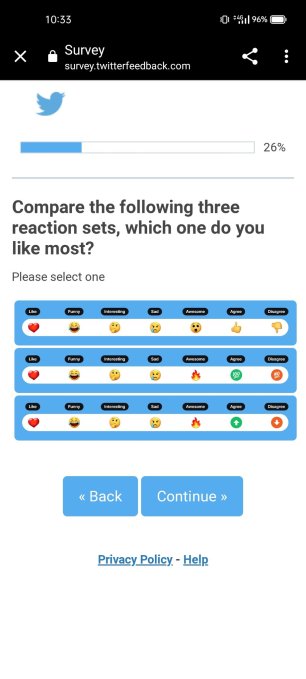
Image Credits: WFBrother on Twitter (opens in a new window)
The survey questions demonstrated that Twitter is aware of the challenges that come with introducing emoji reactions that could imply negative sentiments. It asked the respondents how they would want to take advantage of a downvote or dislike, for example — whether they would use the reaction instead of replying to a tweet, or whether they would downvote irrelevant or offensive tweets, as well.
Twitter also asked how users would feel if their own tweets were downvoted and whether that would discourage them from tweeting in the future, or if they would take it more as “constructive” feedback about their content. (Ha!)
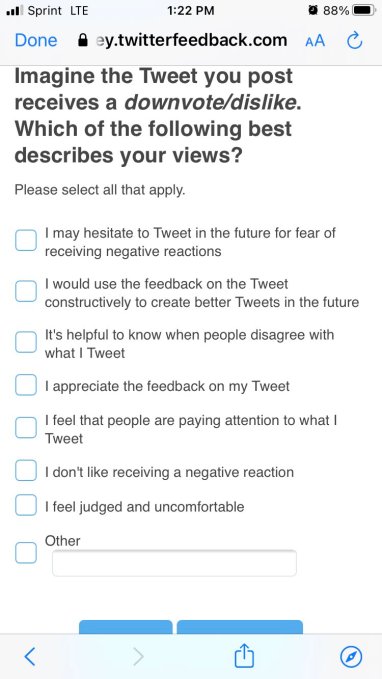
Image Credits: @jdm0079 on Twitter (opens in a new window)
The company clearly understands that the introduction of reaction sets could have a significant impact on how people engage with Twitter content and, potentially, could even lead to a chilling effect on Twitter usage if people became overly concerned about having their tweets downvoted.
That said, the upvote and downvote mechanism — whether as thumbs or arrows or anything else — remains a common way to engage with content elsewhere on the web. This includes not only forum sites like Reddit and others, but also YouTube, Imgur and Pandora, to name a few. A “thumbs up” signal by itself, meanwhile, is even more popular thanks to Facebook’s lead. But today, this like button can also take the shape of an arrow, heart or just a box to click — like when you mark an Amazon.com user review as “Helpful,” for example.
Meanwhile, the use of expanded emoji reactions has become more common since Facebook’s emoji reaction set debuted in 2015. Since then, other social media sites adopted their use, like LinkedIn. Twitter even added emoji reactions to its DMs (direct messages) last year.
Twitter’s survey additionally asked users about how the thought the emoji reactions should be displayed — like whether negative reaction counts should be visible, for instance.
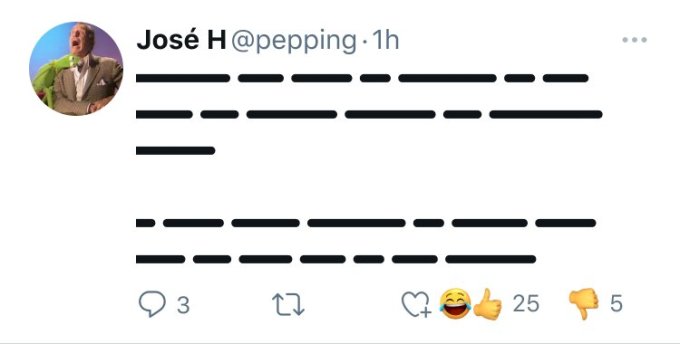
Image Credits: @WFBrother on Twitter (opens in a new window)
Twitter told TechCrunch the work it’s doing in the space of reactions is exploratory — it’s only running this survey now because the company is thinking about ways people could add more nuance to the conversations they’re having, and how, by doing so, readers would be able to better understand the additional context around those conversations. Plus, Twitter notes that the new emoji reactions would not replace the “heart;” they’re additive.
But although Twitter hasn’t yet built out its emoji reaction set or put it into testing, it appears it’s on the path to do so.
In response to a user’s recent request to test emoji reactions instead of just hearts, Twitter Chief Design Officer Dantley Davis replied, “we’ll have something for you soon.”
